文章
Dummer. ゛☀
2017年07月26日

Family - Ranunculaceae
Stems - To +1m long, vining, climbing, suffrutescent, pubescent, twisted or not, angled and ribbed, 2-3mm thick, brown.

Leaves - Opposite, pinnately compound, petiolate, mostly about +/-15cm long. Rachis antrorse pilosulous. Leaflets opposite. Petiolules to +/-1.5cm long, with a very shallow adaxial groove, pilosulous. Terminal most leaflets often twisted and acting as tendrils. Tendrils present from between the leaflets or not. Leaflets ovate to lanceolate, with obvious reticulate venation (especially below), entire, acute, to +/-9cm long, +/-5cm broad, dark dull green and nearly glabrous adaxially, shiny light green and pubescent abaxially.

Inflorescence - Single pedunculate axillary flower. Peduncle often with a pair of opposite bracts in the lower 1/3. Bracts typically orbicular. Peduncles antrorse pilosulous, to +/-11cm long, purplish at apex by the flower. Flower pendulous.
Flowers - Petals absent. Sepals petaloid, to 2.5cm long, united in basal 2/3 but easily separated, spreading to (more commonly) recurved at the tips, acute, pilosulous externally (may need a lens to see this), purplish at the base and fading to greenish at the tips, thick (+/-2mm). Stamens many, mostly included, their apices just protruding beyond the sepals, to 2cm long, glabrous in the basal 1/2, with antrorse barbs in the apical 1/2, greenish-yellow. Anthers basifixed, not easily differentiated from the filaments. Pistils densely antrorse appressed pubescent, with long curling apices.

Flowering - May - September.
Habitat - Low or rocky woods, bluff ledges, thickets, slopes.
Origin - Native to U.S.
Other info. - This species can be found throughout Missouri and is the most common member of the genus in the state. It can be identified by its pubescent stems, bluish flowers (which reach about 2.5cm long), and its reticulate-veined leaflets. Many of the Clematis species in Missouri look alike, check carefully to ensure a proper ID. The leaves of this species, and most others in the genus, blacken quickly upon drying.
Stems - To +1m long, vining, climbing, suffrutescent, pubescent, twisted or not, angled and ribbed, 2-3mm thick, brown.

Leaves - Opposite, pinnately compound, petiolate, mostly about +/-15cm long. Rachis antrorse pilosulous. Leaflets opposite. Petiolules to +/-1.5cm long, with a very shallow adaxial groove, pilosulous. Terminal most leaflets often twisted and acting as tendrils. Tendrils present from between the leaflets or not. Leaflets ovate to lanceolate, with obvious reticulate venation (especially below), entire, acute, to +/-9cm long, +/-5cm broad, dark dull green and nearly glabrous adaxially, shiny light green and pubescent abaxially.

Inflorescence - Single pedunculate axillary flower. Peduncle often with a pair of opposite bracts in the lower 1/3. Bracts typically orbicular. Peduncles antrorse pilosulous, to +/-11cm long, purplish at apex by the flower. Flower pendulous.
Flowers - Petals absent. Sepals petaloid, to 2.5cm long, united in basal 2/3 but easily separated, spreading to (more commonly) recurved at the tips, acute, pilosulous externally (may need a lens to see this), purplish at the base and fading to greenish at the tips, thick (+/-2mm). Stamens many, mostly included, their apices just protruding beyond the sepals, to 2cm long, glabrous in the basal 1/2, with antrorse barbs in the apical 1/2, greenish-yellow. Anthers basifixed, not easily differentiated from the filaments. Pistils densely antrorse appressed pubescent, with long curling apices.

Flowering - May - September.
Habitat - Low or rocky woods, bluff ledges, thickets, slopes.
Origin - Native to U.S.
Other info. - This species can be found throughout Missouri and is the most common member of the genus in the state. It can be identified by its pubescent stems, bluish flowers (which reach about 2.5cm long), and its reticulate-veined leaflets. Many of the Clematis species in Missouri look alike, check carefully to ensure a proper ID. The leaves of this species, and most others in the genus, blacken quickly upon drying.
0
0
文章
Dummer. ゛☀
2017年07月26日

Family - Caryophyllaceae
Stems - To +1m tall, erect, herbaceous but stout, single or multiple from the base, simple in the basal 2/3, branching in the inflorescence, fistulose, densely retrorse puberulent, densely glandular pubescent in the apex, 4-5mm in diameter.
Leaves - Opposite, sessile, decussate, many pairs per stem, ovate-lanceolate, entire, acuminate, densely puberulent to hispidulous above and below, paler abaxially, to +/-10cm long, +/-4cm broad. Single midrib impressed adaxially, expressed abaxially.
Inflorescence - Terminal and axillary cymes at the apex of the stem. Each division of the cyme subtended by a pair of foliaceous bracts. Bracts reduced upward. Pedicels and bracts densely viscid-glandular. Pedicels typically +/-1cm long.
Flowers - Petals 5, spreading, clawed, 4-5cm long, distinct. Claw to +2cm long, mostly whitish, glabrous but with ciliate margins. Limb to +2cm long, 5-7mm broad, red, oblong, mostly glabrous but with a few hairs along the margins, with some viscid glands, with a shallow notch at the apex or not, with 2 basal appendages at the base of the limb. Appendages subulate, acute, erect, red, +/-5mm long, -2mm broad. Stamens 10, 5 adnate to the base of the petals and 5 alternating with the petals, slightly exserted. Filaments white but darkened near the apex, +2.5cm long, glabrous. Anthers +/-2mm long, greenish-blue. Styles 3, distinct, well exserted, to +3cm long, glabrous, white with purple apices (stigmas). Ovary superior, green, glabrous, cylindric, 7-8mm long, 2mm in diameter (in flower), unilocular. Placentation free-central. Ovules many. Calyx tubular, green, densely viscid glandular externally, glabrous internally, 10-ribbed, accrescent, +/-2.5cm long, truncate and slightly saccate at the base.
Flowering - May - October.
Habitat - Rocky prairies, rocky open woods, thickets, borders of rocky glades, roadsides.
Origin - Native to the U.S.
Other info. - This striking plant can be found in the Ozark region of Missouri but is sometimes cultivated elsewhere. This species is easy to identify in the field because of its brilliant flowers and stems which have many nodes and leaves. Another species, S. virginica L., is similar but is a smaller plant with mostly basal leaves. Both species rival any commonly cultivated plant and should be grown more in home gardens.
Stems - To +1m tall, erect, herbaceous but stout, single or multiple from the base, simple in the basal 2/3, branching in the inflorescence, fistulose, densely retrorse puberulent, densely glandular pubescent in the apex, 4-5mm in diameter.

Leaves - Opposite, sessile, decussate, many pairs per stem, ovate-lanceolate, entire, acuminate, densely puberulent to hispidulous above and below, paler abaxially, to +/-10cm long, +/-4cm broad. Single midrib impressed adaxially, expressed abaxially.

Inflorescence - Terminal and axillary cymes at the apex of the stem. Each division of the cyme subtended by a pair of foliaceous bracts. Bracts reduced upward. Pedicels and bracts densely viscid-glandular. Pedicels typically +/-1cm long.
Flowers - Petals 5, spreading, clawed, 4-5cm long, distinct. Claw to +2cm long, mostly whitish, glabrous but with ciliate margins. Limb to +2cm long, 5-7mm broad, red, oblong, mostly glabrous but with a few hairs along the margins, with some viscid glands, with a shallow notch at the apex or not, with 2 basal appendages at the base of the limb. Appendages subulate, acute, erect, red, +/-5mm long, -2mm broad. Stamens 10, 5 adnate to the base of the petals and 5 alternating with the petals, slightly exserted. Filaments white but darkened near the apex, +2.5cm long, glabrous. Anthers +/-2mm long, greenish-blue. Styles 3, distinct, well exserted, to +3cm long, glabrous, white with purple apices (stigmas). Ovary superior, green, glabrous, cylindric, 7-8mm long, 2mm in diameter (in flower), unilocular. Placentation free-central. Ovules many. Calyx tubular, green, densely viscid glandular externally, glabrous internally, 10-ribbed, accrescent, +/-2.5cm long, truncate and slightly saccate at the base.

Flowering - May - October.
Habitat - Rocky prairies, rocky open woods, thickets, borders of rocky glades, roadsides.
Origin - Native to the U.S.
Other info. - This striking plant can be found in the Ozark region of Missouri but is sometimes cultivated elsewhere. This species is easy to identify in the field because of its brilliant flowers and stems which have many nodes and leaves. Another species, S. virginica L., is similar but is a smaller plant with mostly basal leaves. Both species rival any commonly cultivated plant and should be grown more in home gardens.
0
0
文章
Miss Chen
2017年07月26日


Caldo de ortiga
1. Se trocea la planta (la raíz no) y se macera en agua fría. La proporción es 100 grs. por litro si está fresca (20 grs. si está seca).
2. Es preferible utilizar un recipiente de madera o cerámica tapado y que deje circular el aire.
3. Se remueve todos los días, y a partir del 14, cuando ya no haya espuma, se filtra. Esta mezcla, diluida con agua dos veces su volumen (ejemplo, si es 1 litro, se mezcla con 2 litros de agua), actúa como repelente para pulgones y araña roja.
Cola de caballo: fungicida casero a base de esta planta.
1. Poner en remojo 1Kg. de ésta hierba o (150 grs. si la planta está seca), en 10 litros de agua y dejarlo macerar 24 horas.
2. Se cuece el caldo a fuego lento media hora, se deja enfriar y se filtra.
3. Antes de aportarlo a las plantas, se diluye en cinco partes de agua y se pulveriza en días soleados.
4. Si el ataque es fuerte, se aplicará tres días seguidos mezclado con caldo de ortigas.
5. Además de buen fungicida, previene la acción de áfidos y pulgones.

Ajo, cebollas y guindillas
1. Triturar en la batidora, un diente de ajo con su piel, tres cebollas también con su piel, tres guindillas frescas picantes y un vaso de agua fría.
2. Dejar reposar toda la noche.
3. Filtrar a la mañana siguiente con un colador de tela y exprimirlo bien.
4. Diluir la mezcla en 4 litros de agua y pulverizar sobre las plantas afectadas de pulgón, araña roja y mosca blanca.
5. Repetir tres veces con un intervalo de 10 días.
0
0
文章
Miss Chen
2017年07月25日


1. Agua a presión: l os pulgones se pueden repeler dándole a las plantas una ducha fuerte con la manguera. Sujeta con una mano los brotes que contienen pulgones y echa el agua a presión. Haciendo esto varias veces, desaparecen.
2. Agua jabonosa: llena de agua un pulverizador de litro o litro y medio y añade una cucharadita de lavavajillas, jabón natural o jabón de potasa. Rocía las plantas.
3. Agua y colillas de tabaco: otro remedio contra pulgón es coger los restos de los cigarros, meterlos en agua 24 horas, cuélalo y luego aplica el líquido en pulverización. Se puede emplear como preventivo, antes de ver los pulgones.
Cochinillas
Quita todas las Cochinillas que puedas a mano una a una.
Mosca blanca
Es posible combatir la Mosca blanca pulverizando con agua y jabón.

Otro método es usar unas tiras o placas de color amarillo untadas de pegamento. El color amarillo las atrae y se quedan pegadas.
Caracoles y babosas
Un recipiente con cerveza produce un olor que los atrae y caerán dentro. Luego los recoges y eliminas. Otra opción es preparar un cebo mezclando 250 gramos de salvado con 14 gramos de metaldehído en polvo. Una vez hecha la pasta, haz pequeñas bolas y humedécelas con agua para colocarlas estratégicamente a una distancia prudencial de dos o cuatro metros.
Captura a mano
Escarabajos, orugas, gusanos, caracoles, babosas... éstos últimos por la noche después de una lluvia o riego.
Gatos
Un método para ahuyentar a los gatos esllenar con agua algunas botellas de plástico trasparente y colocarlas entre las plantas. Los reflejos del sol sobre la botella ahuyentan a los gatos.
Los gatos se ahuyentancon repelentes electrónicos que emiten ultrasonidos. También venden líquidos repelentes.
Pájaros y uvas
Aclara de exceso de racimos la parrapara que engorden los mejores y protégelos de los pájaros con conos del papel de estraza, dejando algunos al descubierto para que se centren en ellos los pájaros y no piquen a los otros.
0
0
文章
权问薇
2017年07月24日

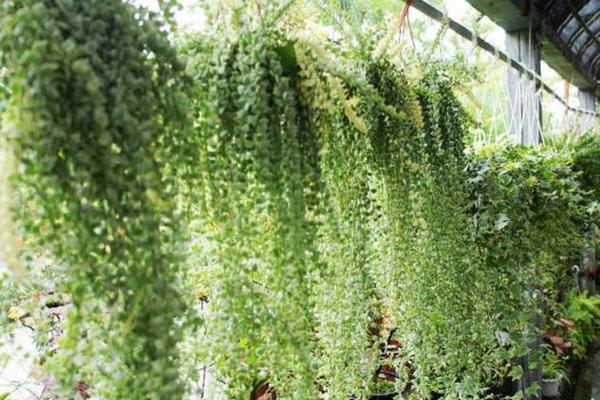
#锦屏藤
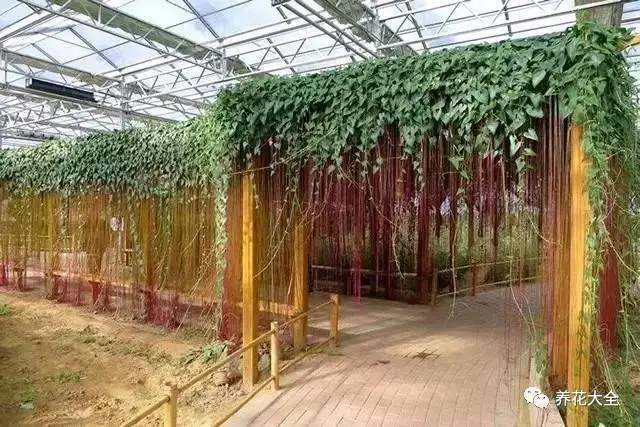
养护要点:
1.光照:锦屏藤喜光,所以要保证充足的光照时间,就依现在的这个天气,妥妥的能长好。
2.水分:夏天蒸发量大,几乎要一天一浇水。
3.施肥:锦屏藤对肥料要求不多,可以每隔两三个月追施一次复合肥。
百万心
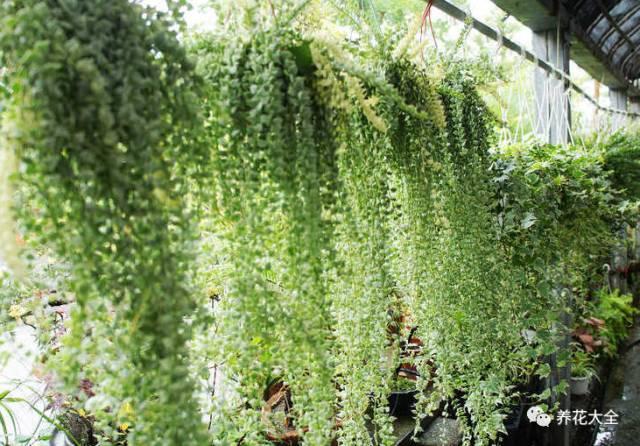
养护要点:
1.光照:百万心喜欢半阴的环境,所以非常适合室内养护。
2.水分:夏季温度高需要经常浇水,保持土壤湿润。
3.施肥:百万心对肥料需求不大,可每个月追施一次稀薄的液肥。
绿萝

养护要点:
1.光照:绿萝耐阴性较强,可以短时间适应无光的环境,不耐暴晒,夏天如果放在窗台,需要适当的遮阴。
2.水分:夏季绿萝需水较多,可以1到两天浇一次水,并经常向叶面洒水。
3.施肥:每个周可以向绿萝花盆浇灌一些发酵好的淘米水,促进绿萝生长。
吸毒草
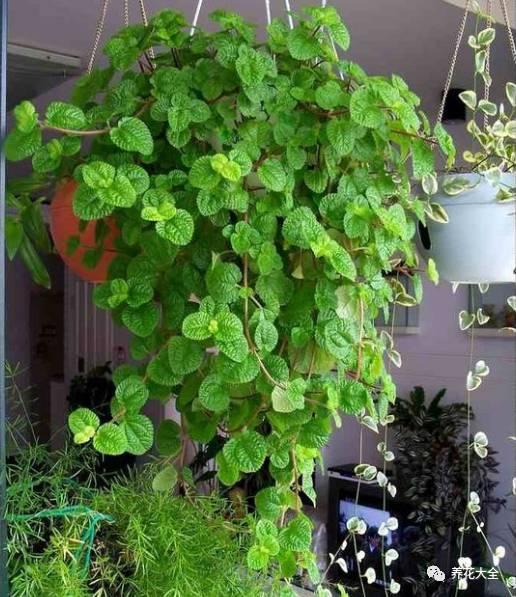
养护要点:
1.光照:吸毒草有一定的耐阴力,不耐强光暴晒,夏季需要适当遮阴。
2.水分:每两三天浇一次清水或者淘米水。
3通风:要想吸毒草长成瀑布,良好的通风一定要做好。
垂盆草
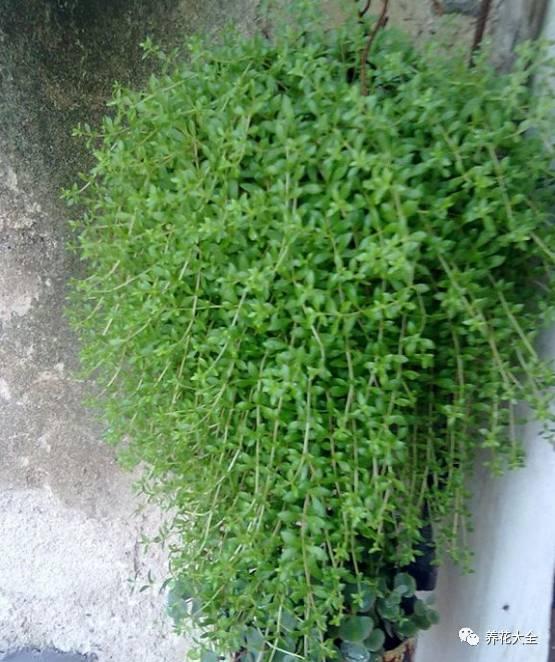
0
0
文章
权问薇
2017年07月24日


九里香的养护
土壤
九里香的培养土可用沙土、细炉渣、饼肥渣、塘泥、泥炭、河沙等六种原料以7:1:2:4:1的份数比例混合。盆地施含有磷钾肥的有机肥,增强迟效性,土壤砂质一定要有良好的排水性。
施肥
每两到三年追施一次有机的肥料,更换一次盆。5月是九里香的生长期,施肥加至每周一次,浓度也相应增加。
浇水
生长期每月给水一次,不宜过多。花期给水不仅要及时,而且要适量,这样才能保证花开的时候会更多、味道会更香。

光照
九里香是喜阳植物,全日照为好,光线稍差也不会影响太大。
温度
九里香抗寒行较好,喜温又喜热。18-28℃最佳,冬季温度5℃以下会影响生长。
九里香养殖的注意事项
初栽时需要盆地放置一些基肥。管理三怕,怕湿、怕冷、怕曝晒。多用有机肥、少用慎用化肥。

1
2
文章
Dummer. ゛☀
2017年07月24日

Family - Fabaceae
Stems - Vining, twining, herbaceous, retrorse pubescent, terete to slightly angled, often twisted, often purplish in strong sunlight.

Leaves - Alternate, trifoliolate, stipulate, stipellate, petiolate. Stipules spreading, triangular, 2-3mm long, striate-nerved, glabrous to strigose, entire. Petioles to +2cm long, sparse antrorse strigose, with a deep adaxial groove. Stiples on all leaflets ovate-triangular, entire, 1.2mm long, mostly glabrous. Petiolules of lateral leaflets 1-2mm long, pubescent adaxially. Petiolule of terminal leaflet 6-7mm long, pubescent as the petiole. Leaflets ovate to lance-ovate, 3-6cm long, .8-1.5cm broad, entire, subacute to rounded at the apex, sparse antrorse strigose on both surfaces, deep green above, light green abaxially. Margins antrorse strigose. Lateral leaflets typically oblique at the base.
Inflorescence - Flowers 3-4 at the end of the peduncles and forming a false whorl. Peduncle axillary, angled, minutely winged, with very sparse retrorse strigose pubescence, to +/-9cm long. Pedicels .5-2mm long, retrorse pubescent. Bracts subtending the calyx ovate to ovate-lanceolate, 1mm long, .6mm broad, shorter than the calyx tube, rounded to subacute at the apex, glabrous adaxially, strigose abaxially.

Flowers - Corolla papilionaceous, pink. Standard pink, 1.5-1.9cm broad, 1.2cm tall, emarginate at the apex or not, glabrous. Wings pink at the apex, rounded with a short claw (to 2mm long), glabrous, 1cm long, 5mm broad, free from keels. Keels white but wine-purple at the apex, strongly deflexed and surrounding the fertile floral organs, glabrous externally, connate on lower margin. Stamens diadelphous, the tube white and glabrous, deflexed and connate around the style. Free portions of stamens 5-6mm long. Anthers yellow, .7mm long. Ovary green, superior, 5-6mm long in flower, sericeous. Calyx bilabiate, green, sparse pubescent. Calyx tube to 3mm long, glabrous internally. Lower lip 3-lobed. Central lobe acuminate-triangular, 1-2mm long, with some strigose hairs near the apex. Lateral lobes acute. Upper lip with one lobe. Lobe rounded. All calyx lobes ciliolate-margined (use lens to see). Fruit antrorse strigose, slightly compressed, to 6cm long, many-seeded.

Flowering - July - October.
Habitat - Low or upland woods, thickets, bluffs, along streams, wooded slopes, ridges.
Origin - Native to U.S.
Other info. - This species can be found mostly in the southern half of Missouri but it is also present in counties along the Mississippi and Missouri rivers. There are three species of Strophostyles in Missouri and the genus is easy to recognize because of the deflexed and curled keel petals of the corolla. Differentiating between the three species can be difficult at times and the differences in the bracts at the base of the calyx tube seem to be the best way distinguish between these species.
Stems - Vining, twining, herbaceous, retrorse pubescent, terete to slightly angled, often twisted, often purplish in strong sunlight.

Leaves - Alternate, trifoliolate, stipulate, stipellate, petiolate. Stipules spreading, triangular, 2-3mm long, striate-nerved, glabrous to strigose, entire. Petioles to +2cm long, sparse antrorse strigose, with a deep adaxial groove. Stiples on all leaflets ovate-triangular, entire, 1.2mm long, mostly glabrous. Petiolules of lateral leaflets 1-2mm long, pubescent adaxially. Petiolule of terminal leaflet 6-7mm long, pubescent as the petiole. Leaflets ovate to lance-ovate, 3-6cm long, .8-1.5cm broad, entire, subacute to rounded at the apex, sparse antrorse strigose on both surfaces, deep green above, light green abaxially. Margins antrorse strigose. Lateral leaflets typically oblique at the base.
Inflorescence - Flowers 3-4 at the end of the peduncles and forming a false whorl. Peduncle axillary, angled, minutely winged, with very sparse retrorse strigose pubescence, to +/-9cm long. Pedicels .5-2mm long, retrorse pubescent. Bracts subtending the calyx ovate to ovate-lanceolate, 1mm long, .6mm broad, shorter than the calyx tube, rounded to subacute at the apex, glabrous adaxially, strigose abaxially.

Flowers - Corolla papilionaceous, pink. Standard pink, 1.5-1.9cm broad, 1.2cm tall, emarginate at the apex or not, glabrous. Wings pink at the apex, rounded with a short claw (to 2mm long), glabrous, 1cm long, 5mm broad, free from keels. Keels white but wine-purple at the apex, strongly deflexed and surrounding the fertile floral organs, glabrous externally, connate on lower margin. Stamens diadelphous, the tube white and glabrous, deflexed and connate around the style. Free portions of stamens 5-6mm long. Anthers yellow, .7mm long. Ovary green, superior, 5-6mm long in flower, sericeous. Calyx bilabiate, green, sparse pubescent. Calyx tube to 3mm long, glabrous internally. Lower lip 3-lobed. Central lobe acuminate-triangular, 1-2mm long, with some strigose hairs near the apex. Lateral lobes acute. Upper lip with one lobe. Lobe rounded. All calyx lobes ciliolate-margined (use lens to see). Fruit antrorse strigose, slightly compressed, to 6cm long, many-seeded.

Flowering - July - October.
Habitat - Low or upland woods, thickets, bluffs, along streams, wooded slopes, ridges.
Origin - Native to U.S.
Other info. - This species can be found mostly in the southern half of Missouri but it is also present in counties along the Mississippi and Missouri rivers. There are three species of Strophostyles in Missouri and the genus is easy to recognize because of the deflexed and curled keel petals of the corolla. Differentiating between the three species can be difficult at times and the differences in the bracts at the base of the calyx tube seem to be the best way distinguish between these species.
0
0
文章
Dummer. ゛☀
2017年07月24日

Family - Crassulaceae
Stems - To 30cm tall (long), erect to ascending (with age), succulent, pink, glabrous, glaucous, multiple from base, simple below, widely branching in the inflorescence, terete, 2-4mm in diameter.

Leaves - Alternate, sessile, terete, succulent, +2cm long, glabrous, glaucous, with two pointed basal auricles. The auricles small, -2mm long. Leaves in the inflorescence reduced to bracts.

Inflorescence - Secund racemes of flowers terminating the main stem, to 6cm long. Flowers sessile.
Flowers - Petals 4, pink, to 6mm long, glabrous, linear to linear-lanceolate, acuminate. Stamens +/-8, exserted, erect. Filaments pinkish, glabrous, longer than the petals. Anthers brown when fresh, quickly turning black, +/-1mm long. Ovary 4-5-parted, glabrous. Pistils acuminate. Sepals 4, 2-3mm long, lanceolate, glabrous, greenish-pink, rounded at the apex.

Flowering - May - July.
Habitat - Limestone glades, ledges, outcrops, also on chert and sandstone.
Origin - Native to U.S.
Other info. - This brilliant little plant can be found mainly in the southwest 1/4 of Missouri but is scattered in a few more southern counties also. The plant is an annual but is quite prolific under the right conditions. It likes full hot sun and well drained soils.
S. pulchellum produces much seed and grows easily from seed so it would make a great garden subject. Why isn't everyone growing this plant?
Stems - To 30cm tall (long), erect to ascending (with age), succulent, pink, glabrous, glaucous, multiple from base, simple below, widely branching in the inflorescence, terete, 2-4mm in diameter.

Leaves - Alternate, sessile, terete, succulent, +2cm long, glabrous, glaucous, with two pointed basal auricles. The auricles small, -2mm long. Leaves in the inflorescence reduced to bracts.

Inflorescence - Secund racemes of flowers terminating the main stem, to 6cm long. Flowers sessile.
Flowers - Petals 4, pink, to 6mm long, glabrous, linear to linear-lanceolate, acuminate. Stamens +/-8, exserted, erect. Filaments pinkish, glabrous, longer than the petals. Anthers brown when fresh, quickly turning black, +/-1mm long. Ovary 4-5-parted, glabrous. Pistils acuminate. Sepals 4, 2-3mm long, lanceolate, glabrous, greenish-pink, rounded at the apex.

Flowering - May - July.
Habitat - Limestone glades, ledges, outcrops, also on chert and sandstone.
Origin - Native to U.S.
Other info. - This brilliant little plant can be found mainly in the southwest 1/4 of Missouri but is scattered in a few more southern counties also. The plant is an annual but is quite prolific under the right conditions. It likes full hot sun and well drained soils.
S. pulchellum produces much seed and grows easily from seed so it would make a great garden subject. Why isn't everyone growing this plant?
0
1
成长记
Mider
2017年07月24日

我新添加了一棵“Haworthia pygmaea var. pygmaea Select,very rough leaf No.2”到我的“花园”


0
0
文章
Colour_
2017年07月23日


盆栽丁香花的养殖方法
1、土壤:丁香花对土壤的要求并不高,只要是肥沃、疏松、排水良好的土壤都适合丁香花生长。
2、浇水:丁香花的管理比较粗放,适应环境的能力比较强,平时只要注意除草,雨季防涝,干旱时注意浇水,便可顺利生长,其它时间不必要太在意是否应该浇水。
3、光照:丁香花是一种喜欢光照的花卉植物,所以种植在能够接受阳光照射的地方更好。
4、温度:丁香花原产区气候特点属于赤道雨林气候,最低月平均气温21度,所以我们养殖时应注意温度控制,尽量不要使温度过低,低于3度将会导致植株死亡。
5、施肥:在栽培的时候要注意,丁香花性喜阳光,稍微耐阴,而且耐寒性强,也耐旱,对土壤要求不严,但适生于肥沃、疏松、排水良好的土壤中。丁香适应性强,管理比较粗放,只要保持湿润就可。丁香不喜欢大肥,要切忌施肥过多,以免引起枝条徒长,影响开花。
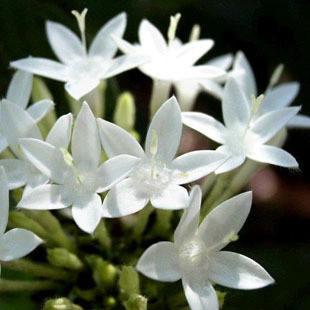
丁香花养殖注意事项
1、幼龄期在台风来临前要做好防风工作,可用绳子和竹子固定丁香植株树干,以减轻台风对丁香植株的摇动,从而减少危害。
2、每年分别在7、9、10月,在丁香植株周围除草,并用草覆盖植株,但不要用锄头翻上以伤害了香根,林地上其它地方的杂草被割除作地面覆盖,还可作绿肥,代替天然植被覆盖地面。除草工作直至树冠郁闭而能抑制杂草的生长为止。
3、栽植3-4年生大苗,栽后应对地上枝干近进行强修剪,即从离地面30厘米处截干,截干后很快就能长出健壮的枝条,使树冠丰满,第二年就可开出繁茂的花来。
丁香的功效和作用
丁香的花语预示着美丽,初恋的感激,记忆以及友情。而紫色的色调奠定了紫丁香的高雅,让它成为我们最喜爱的观赏性与药用价值为一体的常绿花卉。紫丁香它耐寒,有喜欢太阳,花开的早,又有美丽的秋叶。
清热;解毒;利湿;退黄。主急性泻痢;黄疸型肝炎;火眼;疮疡
1
4
万里春:细致而全面。
文章
Colour_
2017年07月23日

黄金葛的繁育方法
绿萝主要用扦插法繁殖,春末夏初剪取15厘米至30厘米的枝条,将基部1节至2节的叶片去掉,用培养土直接盆栽,每盆3根至5根,浇透水,植于阴凉通风处,保持盆土湿润,一月左右即可生根发芽,当年就能长成具有观赏价值的植株。春夏季用枝条扦插容易生根;作图腾柱的必须用带大叶片的顶尖扦插,这样成型比较快。绿萝还可水栽,但与土栽相比植株较小。
黄金葛的养殖方法
一、绿萝以疏松、富含有机质的微酸性和中性沙壤土栽培发育最好。每三年换盆一次,绿萝属阴性植物,忌阳光直射,喜散射光,较耐阴,通常以接受四小时的散射光,绿萝的生长发育最好。
二、繁殖采用扦插和埋茎法。选取健壮的绿萝藤,剪成两节一段,注意不要伤及气根,然后插入素沙或煤渣中,深度为插穗的1/3,淋足水放置于荫蔽处,喷施新高脂膜保湿,提高成活率均在90%以上。
三、绿萝喜较大的空气湿度和湿润的环境。盛夏是绿萝的生长高峰,每天可向绿萝的气根和叶面喷雾数次,既可清洗叶片的尘埃,利于绿萝的呼吸,又能使叶色碧绿青翠,还能降低叶面温度,增加小环境的空气湿度,使叶片更好地生长,绿萝的施肥,以氮肥为主,钾肥为辅。喷施新高脂膜保肥保墒,冬季室温较低,绿萝处于休眠状态,应少浇水,保持盆土不干即可。
四、绿萝最适宜的生长温度为白天20℃-28℃,晚上15℃-18℃。冬季只要室内温度不低于10℃,绿萝即能安全越冬,如温度低于5,易造成落叶,影响生长。生长期适时喷施壮茎灵,可使植物杆茎粗壮、叶片肥厚、叶色鲜嫩、植株茂盛。
五、绿萝都是从广州运到全国各地的冬季买回来的,绿萝一般受过冻所以放在室内会出现很快黄叶现象等这些受冻的叶片黄完落完后春节还会重新发的。一般新买的绿萝到新环境都有1个月左右的适应期,底部黄叶属正常,不过切记:黄叶或死叶不要直接剥落掉要从叶柄中部剪断这样避免直接剥离造成过多水分流失和增加伤口;从而导致上部的叶片还会黄。
绿萝最下面的叶子发黄原因有多种:偶有出现是生长期正常代谢,但间隔时间较长;浇水过多或干旱;给水应见干见湿;秋凉后应停止给肥;在室内应注意光照和通风;冬季应适当喷水。另外,有的绿萝叶黄较多原因大都缘于根部,叶黄只是表象,根烂则叶黄。
冬季养护
绿萝性喜湿热,最佳的生长温度在20℃至30℃,在冬季为其营造适宜的生长环境,成为养护成败的关键。在养护上應注意以下几个方面:
光照:绿萝向阳性并不强,但在冬季,为了补充温度和光合作用的不足,应增加其光照。方法是把绿萝摆放到室内光照最好的地方,或在正午时搬到密封的阳台上晒太阳,同时温度低的时候要尽量少开窗,应为极短的时间内,叶片就可能被冻伤。
温度: 在北方,室温10℃以上,绿萝可安全越冬,室温在20℃以上,绿萝可以正常生长。一般家庭达到这个温度问题不大,需要注意的是要避免温差过大,同时也要注意叶子不要靠近供暖设备。
湿度: 在保证正常温度的条件下,加大湿度对植物的生长极为有利。增大湿度可以采用以下方法:使植物 靠近加湿器,加湿器每天的开放时间在5个小时以上;用调到雾状刻度的喷雾器向植物的叶片、茎部和气根处 喷水,每天若干次;在花盆托盘内保持适量水分,通过它的蒸发增加植物局部的湿度;用冷的湿毛巾或卫生 纸轻擦叶面或短时间内(每日1——2个小时)轻敷叶面;把透明的塑料薄膜罩在植株上,制造小温室的效 果,通过蒸发土壤中的水气补充植物的水分,每天不多于2小时,时间太长会影响植物的通气和光合作用。
水: 冬季的浇水量应根据室温严格控制。供暖之后,浇水也不可过勤,浇水要少向盆中浇,应由棕丝渗水。另外,还應向棕柱上气生根处喷水,减少应蒸发过快而引起的根部吸水不足。冬季浇的水以晾晒一天后的水比较好,过凉容易损伤根部。
肥; 冬季植物生长缓慢,應少施肥。入冬后,施肥以叶面喷施为主。叶面肥要用专用肥,普通无机肥不易被吸收,可使用北大护花神系列和日本出品的花一番等叶面肥。

黄金葛的养殖注意事项
水培黄金葛的要点
1、新剪下来的绿萝水培养殖需要多久才能长出根系?
大概一星期之内
2、新剪下来的绿萝水培养殖多久换一次水?
7-10天
3、施肥多久一次?
你要买那种水培驯养液 是促进水培花生根的 有消炎杀菌的作用 每次换水 都要加几滴进去
水培驯养液 不是营养液 别弄错了 花卉市场都有卖的 水培花的初期 一定要拿那个东西生根。

绿萝主要用扦插法繁殖,春末夏初剪取15厘米至30厘米的枝条,将基部1节至2节的叶片去掉,用培养土直接盆栽,每盆3根至5根,浇透水,植于阴凉通风处,保持盆土湿润,一月左右即可生根发芽,当年就能长成具有观赏价值的植株。春夏季用枝条扦插容易生根;作图腾柱的必须用带大叶片的顶尖扦插,这样成型比较快。绿萝还可水栽,但与土栽相比植株较小。
黄金葛的养殖方法
一、绿萝以疏松、富含有机质的微酸性和中性沙壤土栽培发育最好。每三年换盆一次,绿萝属阴性植物,忌阳光直射,喜散射光,较耐阴,通常以接受四小时的散射光,绿萝的生长发育最好。
二、繁殖采用扦插和埋茎法。选取健壮的绿萝藤,剪成两节一段,注意不要伤及气根,然后插入素沙或煤渣中,深度为插穗的1/3,淋足水放置于荫蔽处,喷施新高脂膜保湿,提高成活率均在90%以上。
三、绿萝喜较大的空气湿度和湿润的环境。盛夏是绿萝的生长高峰,每天可向绿萝的气根和叶面喷雾数次,既可清洗叶片的尘埃,利于绿萝的呼吸,又能使叶色碧绿青翠,还能降低叶面温度,增加小环境的空气湿度,使叶片更好地生长,绿萝的施肥,以氮肥为主,钾肥为辅。喷施新高脂膜保肥保墒,冬季室温较低,绿萝处于休眠状态,应少浇水,保持盆土不干即可。
四、绿萝最适宜的生长温度为白天20℃-28℃,晚上15℃-18℃。冬季只要室内温度不低于10℃,绿萝即能安全越冬,如温度低于5,易造成落叶,影响生长。生长期适时喷施壮茎灵,可使植物杆茎粗壮、叶片肥厚、叶色鲜嫩、植株茂盛。
五、绿萝都是从广州运到全国各地的冬季买回来的,绿萝一般受过冻所以放在室内会出现很快黄叶现象等这些受冻的叶片黄完落完后春节还会重新发的。一般新买的绿萝到新环境都有1个月左右的适应期,底部黄叶属正常,不过切记:黄叶或死叶不要直接剥落掉要从叶柄中部剪断这样避免直接剥离造成过多水分流失和增加伤口;从而导致上部的叶片还会黄。
绿萝最下面的叶子发黄原因有多种:偶有出现是生长期正常代谢,但间隔时间较长;浇水过多或干旱;给水应见干见湿;秋凉后应停止给肥;在室内应注意光照和通风;冬季应适当喷水。另外,有的绿萝叶黄较多原因大都缘于根部,叶黄只是表象,根烂则叶黄。
冬季养护
绿萝性喜湿热,最佳的生长温度在20℃至30℃,在冬季为其营造适宜的生长环境,成为养护成败的关键。在养护上應注意以下几个方面:
光照:绿萝向阳性并不强,但在冬季,为了补充温度和光合作用的不足,应增加其光照。方法是把绿萝摆放到室内光照最好的地方,或在正午时搬到密封的阳台上晒太阳,同时温度低的时候要尽量少开窗,应为极短的时间内,叶片就可能被冻伤。
温度: 在北方,室温10℃以上,绿萝可安全越冬,室温在20℃以上,绿萝可以正常生长。一般家庭达到这个温度问题不大,需要注意的是要避免温差过大,同时也要注意叶子不要靠近供暖设备。
湿度: 在保证正常温度的条件下,加大湿度对植物的生长极为有利。增大湿度可以采用以下方法:使植物 靠近加湿器,加湿器每天的开放时间在5个小时以上;用调到雾状刻度的喷雾器向植物的叶片、茎部和气根处 喷水,每天若干次;在花盆托盘内保持适量水分,通过它的蒸发增加植物局部的湿度;用冷的湿毛巾或卫生 纸轻擦叶面或短时间内(每日1——2个小时)轻敷叶面;把透明的塑料薄膜罩在植株上,制造小温室的效 果,通过蒸发土壤中的水气补充植物的水分,每天不多于2小时,时间太长会影响植物的通气和光合作用。
水: 冬季的浇水量应根据室温严格控制。供暖之后,浇水也不可过勤,浇水要少向盆中浇,应由棕丝渗水。另外,还應向棕柱上气生根处喷水,减少应蒸发过快而引起的根部吸水不足。冬季浇的水以晾晒一天后的水比较好,过凉容易损伤根部。
肥; 冬季植物生长缓慢,應少施肥。入冬后,施肥以叶面喷施为主。叶面肥要用专用肥,普通无机肥不易被吸收,可使用北大护花神系列和日本出品的花一番等叶面肥。

黄金葛的养殖注意事项
水培黄金葛的要点
1、新剪下来的绿萝水培养殖需要多久才能长出根系?
大概一星期之内
2、新剪下来的绿萝水培养殖多久换一次水?
7-10天
3、施肥多久一次?
你要买那种水培驯养液 是促进水培花生根的 有消炎杀菌的作用 每次换水 都要加几滴进去
水培驯养液 不是营养液 别弄错了 花卉市场都有卖的 水培花的初期 一定要拿那个东西生根。

0
0
文章
Colour_
2017年07月23日

盆栽火龙果的养殖方法

1、将火龙果挖出果肉
2、加入清水泡一天
3、装入丝袜里,反复冲洗捏挤
4、再仔细冲洗,直到火龙果种子沉入容器的底部
5、沥干水分
6、将底部没有的孔的容器下部铺上10公分高的一层小石子,上面填好无菌土壤
7、撒上火龙果种子,喷洒适量水
8、 盖上一层膜密封,每天将膜敞开透透气,然后再盖上,一个星期后长出很多芽来

火龙果盆栽种植养护
1.火龙果种子的最佳发芽温度是25度左右。
2.一个中等大小的火龙果的种子,至少可以制作10盆这样的小盆栽,按照自己的需要来取用种子就好了。
3.要选择颗粒比较幼细的培养土,也可以用市售的播种土代替。
4.一定要将附在种子上的果肉和胶质清除干净,否则发芽时易长霉菌。
5.做造型小盆栽,种子要铺得密一些,尤其是边缘的部分,否则种出来稀稀松松,会失去美感。
6.因为杯子没有底孔,所以不要用水壶直接浇水以免浇水过量,2-3天用喷壶喷一次就可以了。

1、将火龙果挖出果肉
2、加入清水泡一天
3、装入丝袜里,反复冲洗捏挤
4、再仔细冲洗,直到火龙果种子沉入容器的底部
5、沥干水分
6、将底部没有的孔的容器下部铺上10公分高的一层小石子,上面填好无菌土壤
7、撒上火龙果种子,喷洒适量水
8、 盖上一层膜密封,每天将膜敞开透透气,然后再盖上,一个星期后长出很多芽来

火龙果盆栽种植养护
1.火龙果种子的最佳发芽温度是25度左右。
2.一个中等大小的火龙果的种子,至少可以制作10盆这样的小盆栽,按照自己的需要来取用种子就好了。
3.要选择颗粒比较幼细的培养土,也可以用市售的播种土代替。
4.一定要将附在种子上的果肉和胶质清除干净,否则发芽时易长霉菌。
5.做造型小盆栽,种子要铺得密一些,尤其是边缘的部分,否则种出来稀稀松松,会失去美感。
6.因为杯子没有底孔,所以不要用水壶直接浇水以免浇水过量,2-3天用喷壶喷一次就可以了。
1
0
文章
权问薇
2017年07月23日


腰果的栽培方法及注意事项
压条
腰果的压条育苗时间每年可以有两个时期,一个是2-4月,另一个是10-11月,在这两个时间段内压条的成果率高达93%。压条母株最适合选择10龄以下的母株,如果母株的年龄过高,超过20龄,即使压条成功也很难生根。压条通常采用泥炭、刨花和苔藓等材料。
组织培养
在附加0.5毫克/升的IAA和0.5毫克/升的激动素的培养基上培养的子叶外殖体可直接形成器官,大约5周时间就可以形成完整的植株。不需要进行培养和诱导。
整形修剪
对腰果树进行整形修剪可以提高坐果率、加强树体的通风和透光。整形修剪通常遵循宜轻不宜重、宜早不宜迟的原则。可以分期多批次的进行修剪,这样的效果会更好。
注意事项
腰果树从栽培到结出果实,这一个漫长的生长阶段会遭受几十种病虫的威胁。比如:流胶病、
黄色叶斑病、叶腐病等。如果腰果树上出现了例如金龟子、腰果细蛾等害虫的身影,一定要及时喷农药哦!
0
0
文章
权问薇
2017年07月23日


文竹
1.想要文竹多开花多结果,要在生长期间多追施含有氮磷的复合肥,其它液肥也可以。开花期间不要追施太多的肥料,可以每两个月追施一次液肥。
2.把收集好的文竹种子浸泡在水里一段时间,促进发芽。
3.准备疏松肥沃的土壤,可以用腐叶土或泥炭土都可以。
4.把种子均匀的撒到土壤中,上面盖上两三厘米的土壤,浇透水,在花盆上方罩一层塑料袋,用来保湿。
5.保持土壤湿润,一个月左右就会发芽,发芽之后,将塑料袋去掉,把花盆放到散射光处通风。
6.随着小苗继续长大,可以缓慢的增加光照,促进枝叶的生长。
7.等到小苗长出散状的叶子时,便可以上盆移栽啦。
8.这样繁殖文竹又快又简单,很快你就成了文竹大户啦。
君子兰
除了文竹,我们熟悉的君子兰开花后,结的的种子也可以自己播种的哦。
1.君子兰种子成熟后,将种子从果肉种清理出来,放在光照充足的地方晾晒两天。
2.找一些新的刨花,就是做家居木材上刨下来的锯末。
1
0
文章
权问薇
2017年07月23日


栀子
1、选取健壮的栀子花枝条,最好是当年新生的嫩枝然后截去8~10cm左右的一条即可。
2、将枝条的下半部分斜切,好漏出更多的横截面,能够促进生根。
3、准备一个塑料瓶或者是杯子,或者是其他不漏水的容器。
4、将栀子花的枝条插进水中即可。(如果容器的口比较大,可以和图中一样,用塑料泡沫固定住,然后浮在水面上即可)
5、夏天天气炎热,因此要一天换一次水,大概半个月或者是1个月的时间就可以生根了!
6、生根后,大概有2条三公分左右的白根就可以移栽了!
虎皮兰
1、选取健康的虎皮兰叶片,从顶部剪下来6~7cm的一截。
2、准备好不漏水的容器。
3、将虎皮兰伤口处在多菌灵溶液中浸泡15分钟左右,然后阴干。
4、将虎皮兰插进水里即可~
5、在生根之前记得每天换水哦~大概半个月的时间,虎皮兰就能生根了,然后上盆即可。
幸福树
1、选择健壮的1~2年生幸福树枝条,注意是要木质化的哦~取15~20cm左右即可~
2、将伤口处放在高锰酸钾溶液中浸泡半个小时左右,然后阴干。
3、将容器清洗干净,倒入干净的水。
4、将幸福树的枝条插进土壤中即可,不过,在没有生根之前,要一天换一次水哦~
5、大概半个月或者是一个月左右的时间,就能生根了!
发财树
1、选取一截比较健壮的发财树枝条哦~然后用多菌灵消毒杀菌。
2、准备干净的容器,装上水,大概三分之二就可以了~
3、将发财树的枝条插进去即可,注意一天换一次水哦~
薄荷
1、选取健壮枝条,剪下来吗,记得留最少2个节点哦~
2、将扦插用的容器清洗干净,装满水。将薄荷插进水里即可。
3、薄荷生根真的超级快,基本上2天就会有根冒出来了!
0
1




